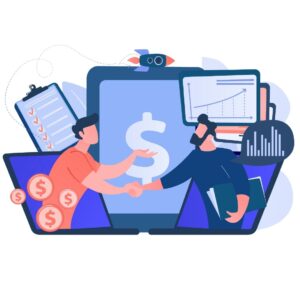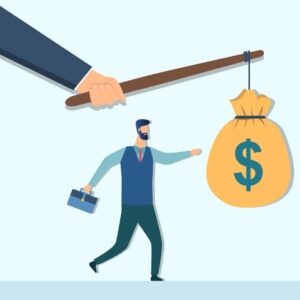Despite it being an integral factor in your success, sales effectiveness can easily become a confusing value to pinpoint. A host of KPIs offer raw information but drawing connections and conclusions about sales effectiveness often feels dependent on guesswork. Without a clear understanding of which KPIs reflect your definition of success, it can be difficult to determine which quantitative data yields qualitative insight.
It is critical to understand how sales effectiveness can be evaluated against a sales strategy. As the business grows and marketing efforts are adjusted, goal-setting defines pathways to measure your sales effectiveness. Here we will dive into how to measure sales effectiveness within the framework of your business and ways to optimize its utility.
What is Sales Effectiveness?
In a broad sense, it is a company or team’s ability to complete sales. As you delineate your business by its industry, scale, structure, and goals, the specifics of sales effectiveness take shape.
Organizational goals are what primarily determine sales effectiveness. Companies may create strategies to increase profits, gain market share, expand into new markets, increase new product sales or reach a litany of other growth objectives. These, in turn, designate which sales metrics to prioritize and the teams or individuals to hold accountable.
Building an understanding of sales effectiveness as exclusive from sales efficiency is key. Both sales efficiency and sales effectiveness have their place in determining quality and cost-effectiveness. However, measuring the two can demand different approaches.
 Sales Effectiveness vs Sales Efficiency
Sales Effectiveness vs Sales Efficiency
Sales effectiveness and sales efficiency are often used interchangeably but there is a difference in how clearly they benefit your company. Efficient selling is based on speed and effort. Effective selling is based on achieving goals. The two should be measured to train and direct sales team members because there are implications for improvement in both.
Effective selling is measured to answer how a salesperson or team is selling toward a goal. How are they benefiting the company? How are they contributing to a prioritized sales strategy?
When measuring efficiency, you can analyze sales volume metrics to maximize your opportunities. How is the team generating and following up with leads? What is their process to expedite the delivery of a solution? How many sales have they produced in a given time?
Efficient and effective selling are both desirable qualities in individuals. However, sales effectiveness is at least beneficial, if not optimal, by itself. Efficiency, on the other hand, is impossible in the absence of effective selling. In driving toward a goal, sales effectiveness, essentially, provides direction and drives the car while efficiency presses on the gas.
How to Measure Sales Effectiveness
How can sales effectiveness be evaluated? Great numbers only tell part of the story, with the rest dependent on the qualities specific to your organization and its goals.
From a KPI standpoint, clearly defining and communicating your goals will often easily reveal sales effectiveness through metrics. If you are trying to increase profits, margins on each sale can be quantified. If you want to expand your market share, you can measure new accounts.
In this view, your unique goals need to fulfill certain criteria to make interpreting data more effective. Selling goals need to be empirically measurable, unambiguous, set within a certain timeframe, and communicated effectively to the players involved. For example, if you were introducing a new product to the market, you might measure the number of new units sold per month by a salesperson. Of course, you can more tightly identify your goals and the subsequent KPIs to evaluate sales effectiveness.
There are strategies to employ that are useful in most businesses to productively measure sales effectiveness and efficiency. Interestingly, many of the practical gauges for sales effectiveness actually measure sales efficiency. It is how effectively you apply your goals to add meaning to the measurement device that determines how accurately you can measure sales effectiveness.
Applying Quotas and Benchmarks for Effective Selling
Growth is the universal organizational goal and that alone helps identify key areas of focus when evaluating sales effectiveness. Again, metrics need to be specific and time-bound so using quotas can help you see who is generating a net gain and a net loss within your strategy. It can also identify how your team members compare relative to one another and identify individual opportunities.
Quotas offer a feedback loop for continually tweaking and improving how you measure sales effectiveness. If quotas are missed at a high percentage, you can evaluate your quota planning strategy and adjust it. Maybe your incentive scheme needs adjustment or your sales ramp methodology needs fine-tuning.
It can also lend insight into effectiveness by specific categories that can be compared for training and strategy purposes. You can break sales effectiveness down into different categories to make data more revelatory and elaborate, such as:
- Sales effectiveness by territory.
- Sales effectiveness by product/service.
- Sales effectiveness by experience or tenure.
By segmenting your sales efforts, you can key in on opportunity gaps to focus on further research, training, and overall investment. Why are sales reps optimizing sales effectiveness in one region but not in another? Are your new team members getting the support they need? By getting more specific with your measurement structure, you can identify limitations in your areas such as product offering, sales process, or rollout schedule.
Sales Lead Response and Sales Cycle Length
Efficiency, with proper direction, maximizes your sales effectiveness. When you know the desired result— the end goal — the question becomes “How many opportunities am I missing?” In B2B sales and many B2C sales contexts, the sales cycle does not finish within one meeting or overnight. Leads can take months of work and countless follow-ups to finally close.
Like sales quotas, monitoring response time and establishing expectations can help you gauge your team’s sales effectiveness. It lends insight into missed opportunities. Team members are one-half of the selling equation: buyer and seller. They have the ability to drive the pace of a sale through their responsiveness. If close rates are steady, the faster response time could mean more opportunities and subsequently more sales.
This approach goes beyond setting quotas to truly maximize sales effectiveness. Meeting quotas is great but a slow response time equals fewer warm leads and a longer sales process. How many new leads were missed because of this and how many sales suffered from the delayed response? How many sales were lost from poor follow-up?
Setting expectations around daily, weekly or monthly contacts alleviates the “what ifs” by holding reps accountable to specific turnaround times. You can often leverage your CRM software to organize and monitor your team’s active leads, progress and follow-up schedule. This can lend insight into who can optimize their processes and how they can accelerate their effective selling.
As you can see, lead response time is connected to sales cycle length, a quality sales effectiveness indicator by itself. Monitoring the sales cycle length provides a comprehensive view of the effectiveness of the sales pipeline, from marketing to selling.
Inefficiencies in the sales process are reflected in the sales cycle length. Bottlenecks can occur at any point from lead generation to closing. Identifying decision-makers, marketing to appropriate customers and sales techniques are some of the factors that contribute to sales cycle length.
The sales cycle is industry and business-dependent so there is no set measure of what is reasonable. Different goals and focuses also contribute to the sales cycle, making sales effectiveness measuring a more nuanced task. New product releases, breaking into different regions, expanding into new verticals, and a host of other variables can affect the sales cycle. It takes research, fine-tuning and benchmarking to determine how many days or months make for effective selling.
How to Leverage Sales Effectiveness
Reliable sales effectiveness measures have a number of key applications within the organization. Improving your processes to move the needle on essential KPIs should be the priority, as your sales output is the most critical component for any business. These metrics can reveal issues in systems and tools that hinder the process or prolong the sales cycle. More importantly, however, they will reflect the salesperson’s experience and provide insights into improving their performance.
Hiring and Training
Performance metrics create a context for effective sales training. Understanding an individual reps’ sales process or sales win rates relative to their business objectives can unearth opportunities for improvement. Do they follow up with leads faster or slower than average? How many qualified leads do they manage? What is their conversion rate?
Answering these questions lets you work with underperformers and leverage the talents of top performers to improve one-on-one and group training sessions. They can also allow you to optimize your onboarding and new-hire training. By monitoring the sales cycle, for example, you can adjust your training period and compensation plans to more adequately prepare your new team members.
Evaluating their contributions to achieving your organizational goals can also identify which materials or coaching schemes work and which do not. In doing so, you not only optimize your onboarding process but also increase your team members’ engagement. Getting to effective selling as efficiently as possible positively affects their confidence and paycheck, fueling their motivation and longevity.
Measuring effectiveness can also lead to team restructures. A rep in a certain territory may become overburdened by leads and let too many go cold. You now know that you may have to add a new rep to avoid lost opportunities.
 Incentive Planning
Incentive Planning
How you pay your employees is understandably a large component of their engagement. More money is motivational. If a sales rep can see his or her situation improving when a certain number or milestone is reached, their effectiveness increases. Using sales effectiveness measurements to perfect your commission and incentive schemes can maintain that engagement.
Keeping incentives grounded in the goals and circumstances of your sales team members is important to maintain engagement. If two team members work in different regions, offer different products, or have different organizational objectives, you may not be able to hold them to the same standard. Furthermore, keeping quotas and incentives flexible to meet business growth maintains consistent pressure to perform. Raising the bar doesn’t necessarily mean making it harder to make the same amount of money. Instead, you can look into creating new thresholds to raise your team’s earning potential.
Importantly, incentives are a powerful tool in directing sales efforts to align with your goals. For example, if you are trying to increase a product’s presence in the market, you can add a spiff or extra bonus for each unit that you sell. It seems like a no-brainer but more tightly defining your goals can reveal more impactful incentive opportunities.
How Wizard of Sales Can Improve Your Sales Effectiveness
Wizard of Sales exists as a comprehensive solution to maximize both sales efficiency AND sales effectiveness. We work with sales and marketing teams to create tailor-made processes and programs that help increase sales and maximize your marketing ROI. We provide training, strategy, and marketing support based on your particular business objectives and opportunities.
Wizard of Sales understands that sales effectiveness is an abstract and malleable concept. Every business is unique and while efficiency can be readily apparent to any observer, effectiveness requires a deeper level of attention. Understanding your scale, USPs, market, and competition all contribute to your meaning of sales effectiveness.
That meaning will change too, at least if your business is growing as it should. Quotas need to be reformed and new KPIs take priority as your capital costs and customer base increase. Net profitability is vital to sustainability and the same standards will not hold over time. What impacts the bottom line is always changing.
Industry leaders are constantly monitoring sales performance, making adjustments, and moving the yardstick. Our sales consulting services can make sense of the fluidity of sales effectiveness, offering scalable and optimized strategies for long-term success. We focus on the key behaviors and processes to maximize your opportunities to win sales. Our team is ready with proven, cost-effective solutions for when you are ready to start consistently reaching your potential and exceeding your expectations.


 Sales Effectiveness vs Sales Efficiency
Sales Effectiveness vs Sales Efficiency
 Incentive Planning
Incentive Planning